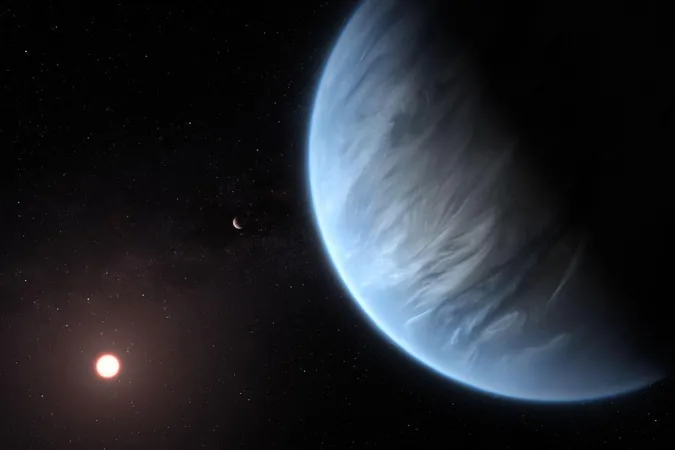
Are We Close to Finding Life Beyond Earth? Groundbreaking Hints from a Distant Planet!
2025-04-17
Author: Jia
Exciting Discoveries from the Universe!
PARIS – Hold onto your hats, space enthusiasts! On April 17, astronomers made an astonishing revelation about the distant planet K2-18b, which lies 124 light years away in the Leo constellation. For the first time, they've uncovered strong 'hints' that could suggest the existence of life beyond our solar system – although some scientists remain skeptical.
K2-18b is not just any planet; it's a massive world—over eight times the mass of Earth and 2.5 times larger—that orbits within its star's habitable 'Goldilocks zone.' This sweet spot may allow for liquid water, a crucial ingredient for life as we know it.
The Quest for Life: Key Chemical Signals
A British-American research team, using the state-of-the-art James Webb Space Telescope, detected two intriguing chemicals in K2-18b's atmosphere: dimethyl sulfide (DMS) and dimethyl disulfide, both of which on Earth are primarily produced by microscopic marine algae. Such biosignatures have sparked a heated debate in the scientific community.
Dr. Nikku Madhusudhan from Cambridge University, who led the study published in The Astrophysical Journal Letters, remains cautiously optimistic. "What we are finding at this point are hints of possible biological activity outside the solar system," he stated, adding, "This is the closest we've come to seeing any feature that we can attribute to life." Yet, experts urge caution, noting potential non-biological sources for these findings.
Breaking Down the Numbers: How Significant Are These Findings?
In 2023, not only did the Webb telescope find methane and carbon dioxide in K2-18b's atmosphere, marking a first for habitable zones, but it also detected weaker signals of DMS. By revisiting the planet, researchers found much stronger signals, though still not reaching the sought-after 'five sigma' statistical threshold, which would convince skeptics.
While previous studies even showed DMS on comets—a finding that suggests non-biological origins—the concentration observed on K2-18b appears to be significantly higher, possibly hinting at a biological source.
Could This Be the Ocean World We’ve Been Looking For?
Dubbed a ‘hycean planet,’ K2-18b is seen as a leading candidate for hosting ancient microbial life, similar to Earth’s primordial ocean ecosystems. Yet there are conflicting views: some researchers argue the planet may be too scorched to sustain liquid water, with suggestions of molten lava being a more realistic environment.
Experts like Dr. Raymond Pierrehumbert express caution, suggesting that even if water exists, the conditions could be "hellishly hot" and uninhabitable.
What’s Next in the Search for Extraterrestrial Life?
Despite the skepticism, Dr. Madhusudhan feels we’re on the brink of a breakthrough. He estimates that only a small amount of additional observation time could elevate their findings to the five-sigma level, leading to confidence in revealing the potential for life in the cosmos.
As we continue to push the boundaries of astronomy, there's hope that future images from the Webb telescope and its successors could answer humanity's age-old question: Are we alone in the universe? With each discovery, we inch closer to a resounding 'no.' Stay tuned for what might come next in our thrilling journey through space!





 Brasil (PT)
Brasil (PT)
 Canada (EN)
Canada (EN)
 Chile (ES)
Chile (ES)
 Česko (CS)
Česko (CS)
 대한민국 (KO)
대한민국 (KO)
 España (ES)
España (ES)
 France (FR)
France (FR)
 Hong Kong (EN)
Hong Kong (EN)
 Italia (IT)
Italia (IT)
 日本 (JA)
日本 (JA)
 Magyarország (HU)
Magyarország (HU)
 Norge (NO)
Norge (NO)
 Polska (PL)
Polska (PL)
 Schweiz (DE)
Schweiz (DE)
 Singapore (EN)
Singapore (EN)
 Sverige (SV)
Sverige (SV)
 Suomi (FI)
Suomi (FI)
 Türkiye (TR)
Türkiye (TR)
 الإمارات العربية المتحدة (AR)
الإمارات العربية المتحدة (AR)